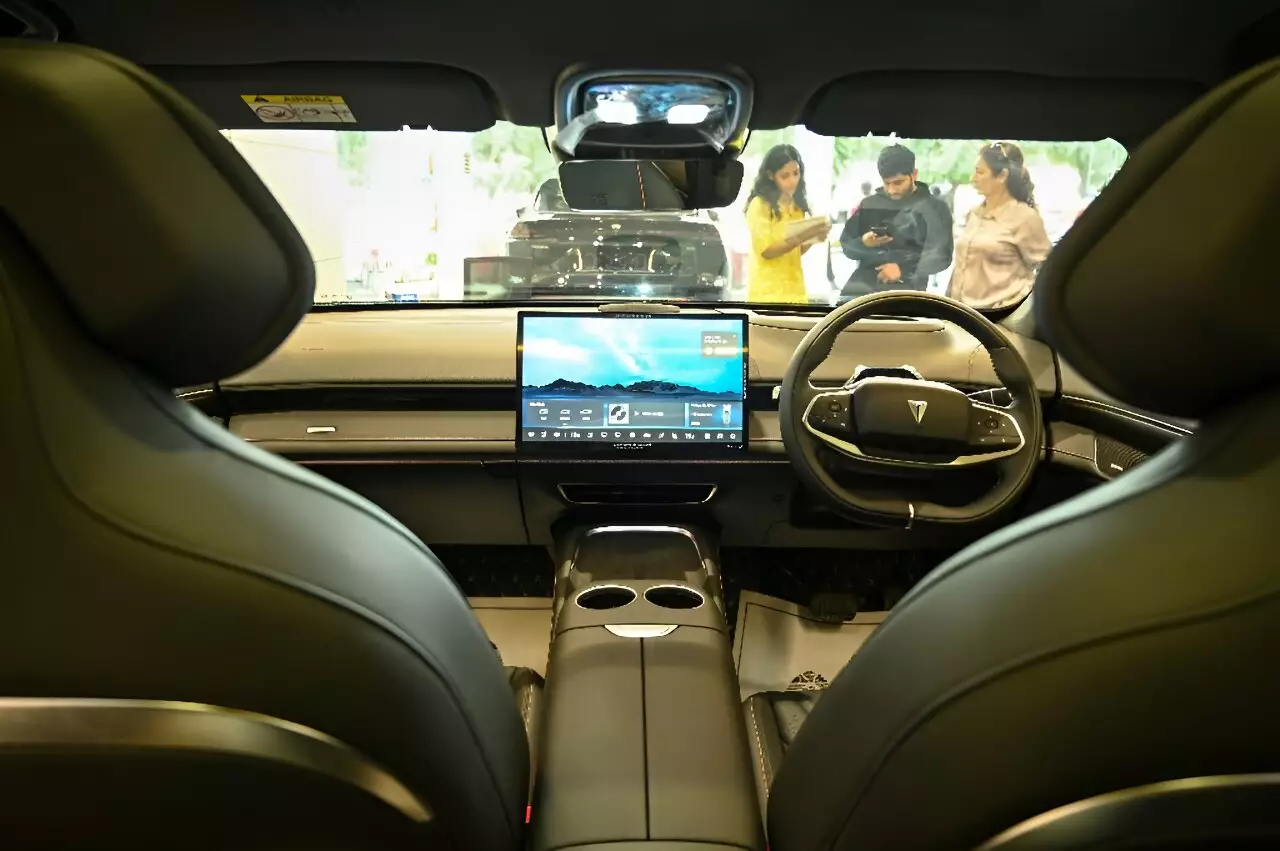In recent years, the streets of Kathmandu have begun to transform, becoming a testing ground for a new transportation ethos centered around sustainability. Once characterized by outdated vehicles and severe air pollution, the city is now witnessing a burgeoning interest in electric vehicles (EVs). This shift marks a remarkable evolution for a nation where, merely a decade ago, reliable electricity was a luxury rather than a norm. Surendra Parajuli, a taxi driver, exemplifies this change. His decision to purchase a battery-powered BYD Atto 3 highlights how rapid advancements in renewable energy have made EVs a financially viable option for many Nepalis today.
Parajuli’s experience sheds light on the economic benefits that come with transitioning to electric transportation. With a range of 300 kilometers on a single charge and drastically lower operational costs compared to petrol vehicles, many in the nation are recognizing the tangible savings associated with electric transport. Currently, the number of electric vehicles on Nepalese roads stands at over 40,000 — a significant increase as demand surges. This demand isn’t purely anecdotal; over 25% of those vehicles were imported in just the last year, reflecting a strong upward trend in consumer interest and acceptance.
The foundation for Nepal’s electric vehicle surge is built on a sweeping transformation in the country’s energy infrastructure. At the turn of the century, over 80% of the population lacked access to electricity. This scenario drastically changed with a massive investment in hydropower, which now supplies an impressive 99% of Nepal’s energy. As of today, nearly 95% of the population has reliable access to electricity, giving rise to a new economic landscape where energy consumption and sustainability are at the forefront.
Kulman Ghising, from the Nepal Electricity Authority, reinforces this point by highlighting how the growth in hydropower and subsequent reduction in energy costs has fostered a conducive environment for EV adoption. As Nepal looks to become a net-zero greenhouse gas emitter by 2045, the push for electric vehicles aligns seamlessly with the nation’s ambitious sustainability goals. However, while policy frameworks are being established to propel EV growth, the complexity of this transition goes beyond merely increasing the number of electric cars on the roads.
Despite the promising outlook, several challenges loom on the horizon for Nepal’s electric vehicle initiative. High hopes of achieving a cleaner environment through electrification may confront serious ecological and logistical hurdles. Critics argue that the aggressive development of hydropower—though generating green energy—could lead to significant environmental degradation. The construction of new dams poses risks to sensitive ecosystems, including endangered habitats. This raises an important question: can Nepal truly claim a clean energy foundation if the cost is the loss of biodiversity?
Moreover, the issue of electronic waste management is a pressing concern as well. As the adoption of EVs increases, so too will the demand for lithium-ion batteries, which come with a complex set of disposal challenges. Nabin Bikash Maharjan, an advocate for responsible waste management, emphasizes the need for the government to focus on sustainable solutions for electronic waste. This aspect is often overlooked in the rush to embrace the latest technologies, and could undermine the positive effects of reducing carbon emissions if not addressed appropriately.
Looking Ahead: Balancing Progress with Sustainability
Nepal stands at a critical juncture as it balances economic growth, energy independence, and environmental preservation. The government’s vision of achieving 90% electric vehicle ownership among private vehicles by the end of the decade is ambitious but lays down a clear path toward a sustainable transport future. However, for this vision to materialize, more comprehensive policies must be developed that address ecological impacts alongside technological advancements.
The electric vehicle boom has the potential to revolutionize not just transportation but also public health by mitigating air pollution—a dire issue that plagues Kathmandu and contributes to a negative quality of life. Yet, whether this transformation can be sustainably achieved remains a key question. As Nepal navigates this transition, it must not only celebrate its achievements but also remain vigilant to the challenges that lie ahead—achieving true environmental sustainability requires foresight and a commitment to responsible practices across all sectors.

